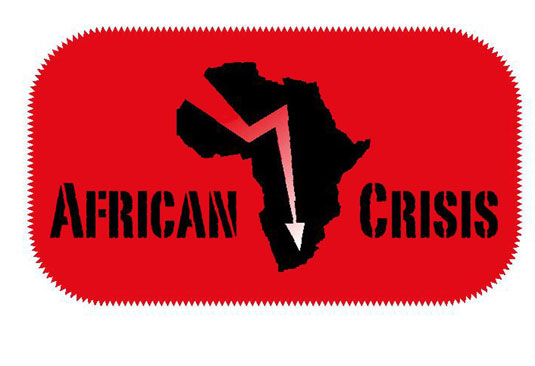WARNING: This is Version 1 of my old archive, so Photos will NOT work and many links will NOT work. But you can find articles by searching on the Titles. There is a lot of information in this archive. Use the SEARCH BAR at the top right. Prior to December 2012; I was a pro-Christian type of Conservative. I was unaware of the mass of Jewish lies in history, especially the lies regarding WW2 and Hitler. So in here you will find pro-Jewish and pro-Israel material. I was definitely WRONG about the Boeremag and Janusz Walus. They were for real.
Original Post Date: 2001-09-25 Posted By: Jan
From the News Archives of: WWW.AfricanCrisis.Org
Date & Time Posted: 9/25/2001 5:09:44 PM
Five Million South Africans to die of AIDS in next 10 years
The Actuarial Society of South Africa (ASSA) has announced the release of the
latest version of its Aids and demographic models, the so-called ASSA2000
model.
According to the model there were 5,3-million people infected with HIV South
Africa in 2000, of which around 236 000 were living with Aids. Over the same
year some 139 000 people are estimated to have died of Aids (26% of all
deaths in that year) and some 64 000 babies became infected from their
mothers.
The model projects that without change in behaviour or medical interventions,
a further 5 million people can be expected to die of Aids over the next 10
years.
A “modest” change in behaviour and health intervention (namely, phasing in
over the next 5 years of a mother-to-child intervention programme, a doubling
of condom use, a reduction by 15% in the number of partners and the
prevalence of sexually transmitted diseases) would result in there being
1,2-million fewer people infected with the virus in 10 years time than if
there is no change. It would also prevent more than half the babies from
becoming infected but unfortunately only save some 250 000 deaths over the
next 10 years.
“There is still a great deal we don’t understand about this epidemic and for
some time to come the models will be in need of constant revision and
updating when new data become available to improve their predictive
accuracy”, says Professor Rob Dorrington, convenor of the ASSA Aids Committee
responsible for building the model.
“There has recently been much debate about the extent of the epidemic and the
Society hopes that the release of the model might help provide a clearer
understanding of the dimensions of the epidemic. However, perhaps one of the
greatest benefits of such mathematical modelling is to enable us to assess
the impact of the epidemic under different scenarios.”
The ASSA2000 model is the latest in a series of models developed by ASSA
starting with the ASSA500 in 1996 and followed by the ASSA600 model in 1998.
The 2000 refers to the fact that the model was calibrated, amongst other
things, on data from the national survey of public antenatal clinics up to
and including 2000, run by the Department of Health. Uniquely, however, the
model is also calibrated on the results of an analysis of the latest
mortality data.
The new model incorporates a number of improvements on the previous model,
chief amongst these are:
(194)Â(183)· It incorporates up-to-date information,
(194)Â(183)· The fit to antenatal seroprevalence data has been improved,
(194)Â(183)· It allows for separate male and female assumptions,
(194)Â(183)· It limits the trends in mortality, fertility and future migration, and
(194)Â(183)· It allows for bimodal paediatric HIV survival, and various other technical
innovations.
However, by far the most important development is that sexual behaviour is
now modelled in much more detail than in the earlier versions taking into
account such things as the:
(194)Â(183)· Risk-group of the partner,
(194)Â(183)· Number of new partners per annum,
(194)Â(183)· Number of sexual contacts per partner,
(194)Â(183)· Age of partner, and
(194)Â(183)· Likelihood that a condom was used.
The ASSA2000 model (also described as the ‘full’ model because it models the
population as four separate population groups) is in fact one of a suite of
models with the ASSA2000 label. Others in the range are:
(194)Â(183)· The ASSA2000 ‘lite’, a less detailed version of the full model which is
smaller and runs much faster,
(194)Â(183)· Provincial versions of the full model (release of these have been held up
by the Department of Health’s embargo on the release detailed provincial data
from the 2000 antenatal survey),
(194)Â(183)· ASSA2000 Urban-Rural, a variation developed for application to other
countries where there is limited data but clearly different urban and rural
epidemics, and
(194)Â(183)· ASSA2000 multi-state model, a complex multi-state model used to model the
impact of HIV/Aids on a group of employees in some detail.
With the exception of the multi-state model, which owing to its complexity is
not in the public domain, the models can be downloaded from the Society’s
website (assa.org.za/committees/aids/aids.htm). Also available at the website
are two tables of summary output from the model for those who are interested
in the results but not interested in downloading and running the model.
Future plans for development include the following:
(194)Â(183)· Redesigning the model to allow for more complex patterns of change
behaviour suggested by observations from countries at a more advanced stage
in the epidemic.
(194)Â(183)· Redesigning the model to allow for the modelling of various possible
interventions, the chief being access to antiretroviral therapy.
(194)Â(183)· Adapting the model to allow for estimation of morbidity (e.g. the numbers
at the various clinical stages of the disease) and in particular to measure
the impact on TB.
(194)Â(183)· Developing an add-on program for estimating the numbers of orphans by
various definitions (e.g. maternal, paternal and dual).
Media Statement distributed on behalf of the Actuarial Society of South
Africa by:
Professor Rob Dorrington, Professor of Actuarial Science, University of Cape
Town and Convenor of the ASSA Aids Committee.
What does 140 000 people look like? Go to this link to see:
http://www.mg.co.za/mg/za/archive/2001sep/features/graveyard.html
